Where do bees go when it rains? Renowned for their tireless work ethic and vital contribution to pollination, bees are one of Earth’s most adaptable insect species.
Their ability to adapt and thrive in diverse environments is due to their intricate behaviors and patterns. Understanding the effect of rain on bees is an interesting topic.
You are viewing: Where Do Bees Go When It Rains
Learning about the behavior of bees during rainy weather offers insights into their ability to survive, navigate, and adapt to changing conditions.
So, what do bees do when it rains?
During rainfall, solitary bees and some bumble bees seek shelter in flower petals, leaves, or subterranean tunnels, whereas honey bees return to their hives.
The Connection of Bees and Rain
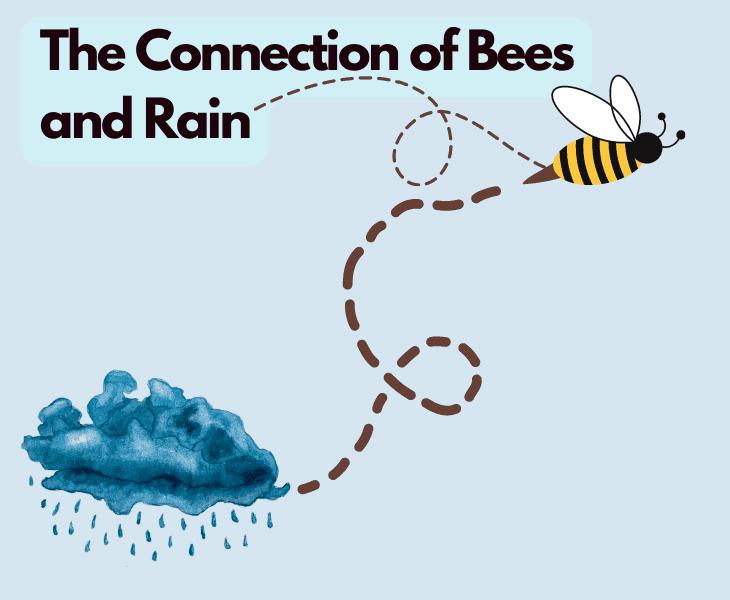
Understanding the reasons behind bees’ tendency to avoid rain is crucial.
Rain poses a significant challenge for bees, as their bodies are usually lightweight and optimized for efficient flight.
Despite their small size, raindrops can be harmful to flying creatures as they can act as projectiles and obstruct their movement or cause injuries.
Moreover, bees drenched in water encounter challenges when returning to their hives, which could result in fatal fatigue.
The Effect of Temperature
Bees face a risk when it rains due to the chilly weather that comes with it.
This is because bees need to maintain a specific body temperature to carry out their flying and foraging activities.
Their temperature regulation is mainly dependent on the surrounding environment since they are ectothermic organisms.
The sudden drop in temperature caused by cold rain can quickly lower their body temperature, leaving them helpless and even risking their lives.
What Happens When Bees Get Wet?
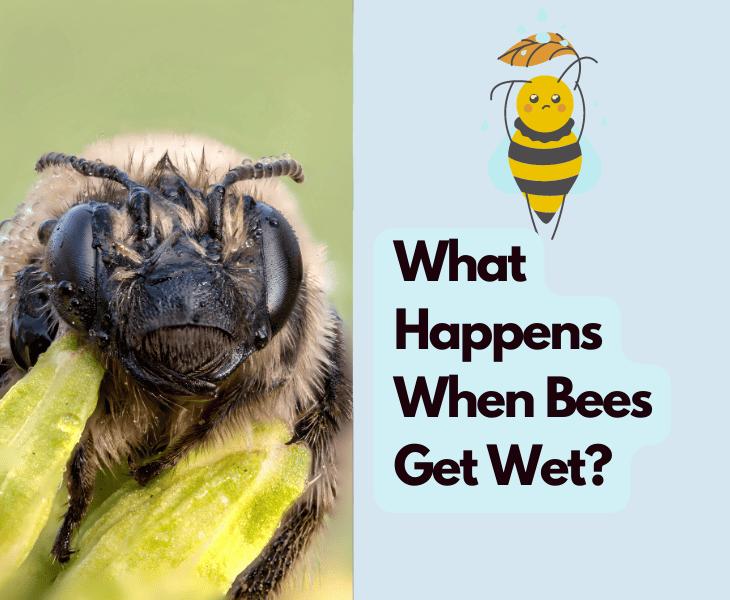
Small amounts of water on the wings, thorax, and abdomen do not stop most bees from flying.
When a bee’s body becomes overly laden with water, it is difficult for it to fly.
Extra water weighs bees down, shortening their foraging flights or bringing them to a halt in the worst scenario.
Raindrops that are too big can also be an issue, as they can knock bees out of the sky.
You can witness some of the intrepid hive residents take flight and then return as others try to avoid the big drops right at the hive entrance.
Fact: As their bodies require a lot of calories to stay in the air, bumblebees are always within 45 minutes of famine.
Can Bees Predict Rain?
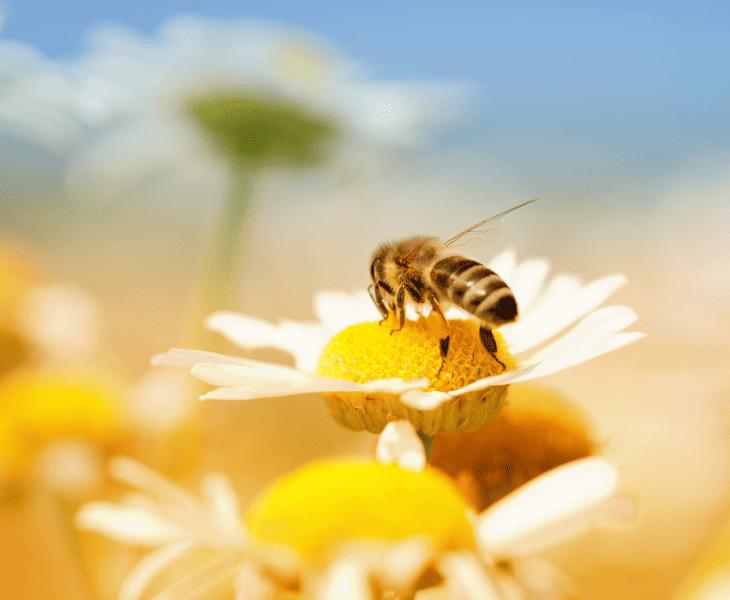
Although no definitive scientific evidence supports the notion that bees can forecast approaching rainfall, certain observed actions imply that they might be able to do so.
Honey bees are known for their remarkable ability to detect changes in weather patterns.
With their advanced sensory abilities, these creatures can sense even the slightest variations in humidity, temperature, and air pressure.
This in turn allows them to predict the onset of rainfall.
Read more : When Does Billboard Update
It is commonly thought that bees have the ability to detect these alterations several hours prior to precipitation, allowing them sufficient time to make their way back to the security of their hives.
An Important Consideration
When there is a forecast of rain, bees usually stop their search for food. The basis for this choice lies in the difficulties caused by rainfall.
Raindrops can be a significant hindrance to bees as their bodies are not well-equipped to handle the weight of the water.
This can make it difficult for them to fly and move around with ease.
Fact: Bees tend to steer clear of foraging during rainy weather and prioritize their safety by heading back to their hives.
Where Do Bees Go When It Rains?
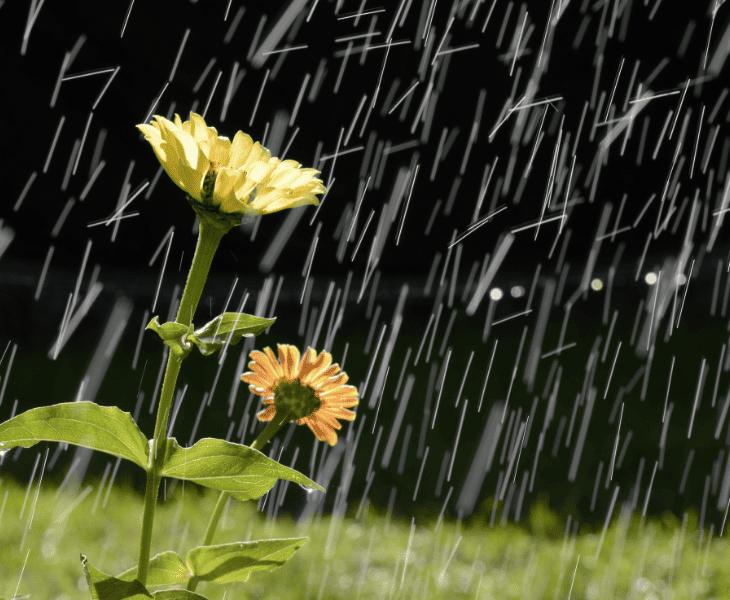
It is true that bees do not really enjoy the rainy season because of all the challenges it poses. But, what do they exactly do when it rains?
Here is a bit about it:
They Return to the Hive
When bees detect an upcoming rainfall, they typically return to their hive. Beeswax is utilized by bees to create waterproof hives.
The inside remains safeguarded and free from external weather conditions such as rain, wind, and chilly temperatures.
Amidst the rain, the hive of bees is bustling with activity. Inside tasks are taken over by the worker bees, who usually go out foraging.
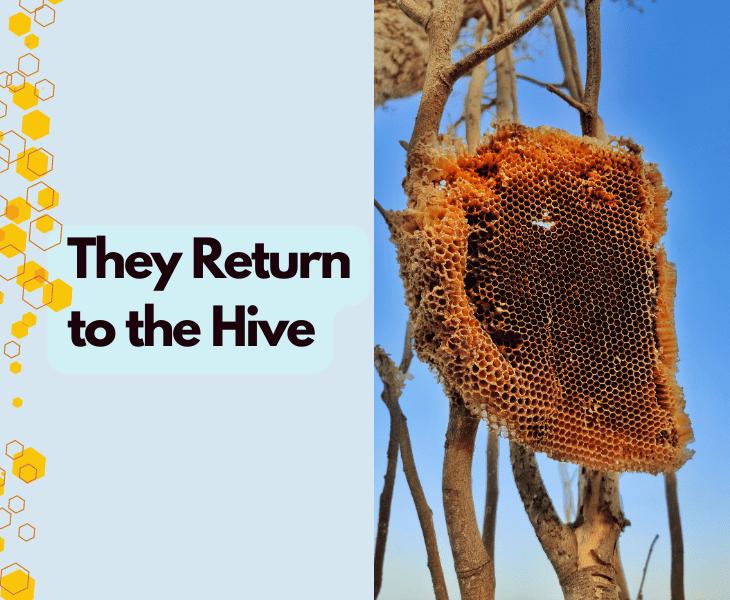
The duties of a beekeeper can vary greatly and may include:
- Taking care of the larvae
- Managing the honeycomb
- Looking after the queen
- Transforming gathered nectar into honey
The beehive enters a phase of communal ‘tidying up’, enabling it to maintain optimal productivity despite any adverse weather conditions.
They Protect the Hive
During periods of heavy rainfall, worker bees take on the important responsibility of safeguarding the hive.
The protection of the hive from water infiltration is a crucial responsibility of guard bees.
When the rain starts pouring, these vigilant sentinels take their place at the doorway and create a blockade by huddling closely together.
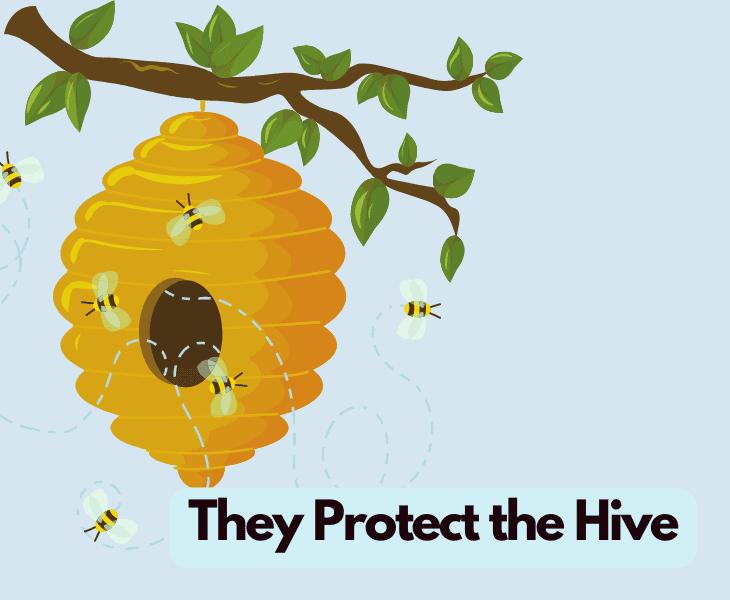
By using their own bodies, they create a barrier around the hive that is waterproof and prevents water from entering.
This conduct highlights the impressive collaboration and commitment of the guard bees.
To keep the hive safe and dry, they hold their ground, even in prolonged periods of rain.
They exhibit their natural comprehension of the possible dangers of water infiltration by serving as live plugs.
An Important Consideration
The arrangement of the guard bees assists in controlling the circulation of air inside the beehive.
Maintaining an optimal environment for the colony is possible by regulating the entrance, which helps to prevent the accumulation of excessive moisture inside the hive.
The bees’ dedication to safeguarding their dwelling showcases their advanced social structure and their unwavering devotion to preserving their habitat.
They Cluster for Warmth
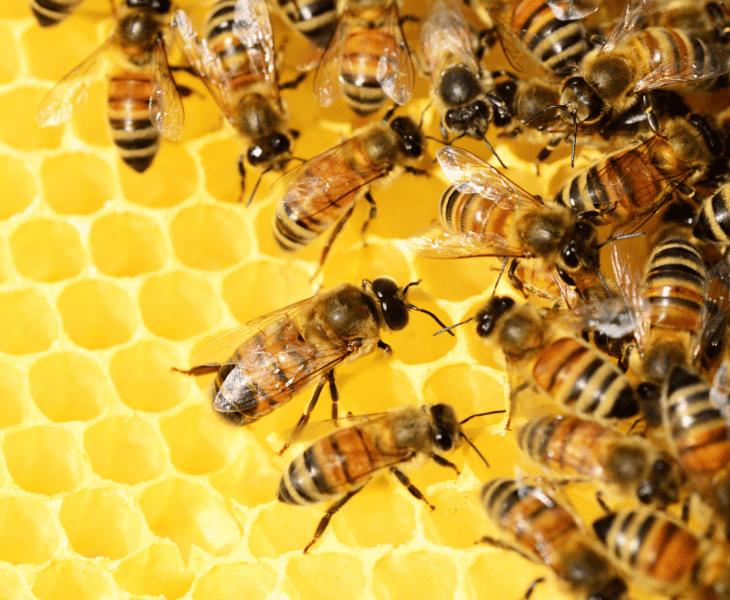
Bees often gather in the hive for warmth and use it as a crucial means of survival when faced with harsh weather conditions such asheavy rains or cold temperatures.
Read more : When To Fertilize Rhododendrons
As ectothermic creatures, bees depend on their surroundings to regulate their body temperature.
During cold weather, the bees huddle together inside their hive, forming a natural insulation layer.
The warmth generated by their bodies is crucial for their survival and the growth of their offspring.
Fact: The bees’ ability to cluster together in harsh weather conditions is a remarkable example of their social structure and resilience as a community.
They Wait Out the Storm
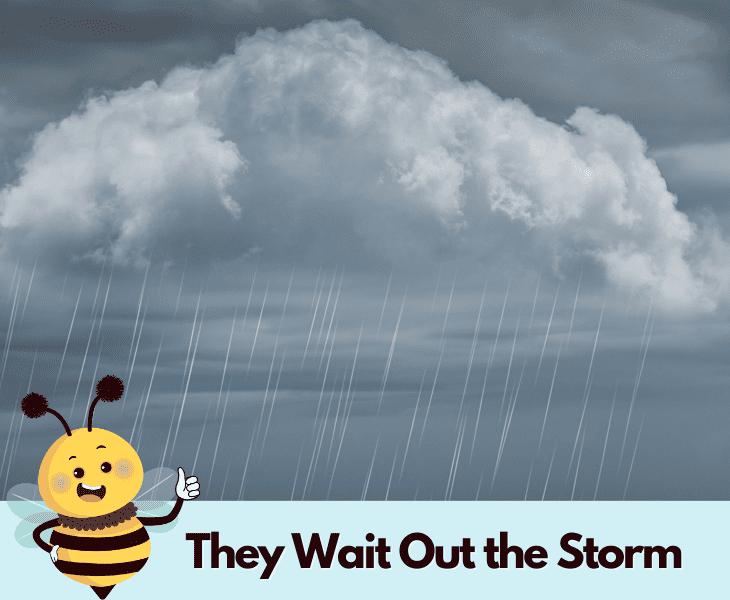
Waiting for the storm to get over is a crucial element of bee conduct when faced with extended periods of intense rainfall.
Bees take shelter in the hive to wait out the storm, ensuring a secure and dry environment.
The beeswax structure of the hive is specifically built to endure harsh weather conditions and is highly resistant to water.
During this time, bees depend on their stored food reserves, mainly feeding on honey, which is a high-energy food source.
Their ability to preserve energy and sustain crucial hive operations in adverse weather conditions showcases their exceptional preparedness.
Fact: The significance of honey storage for bees cannot be overstated, especially during harsh weather conditions, as it guarantees the survival of the colony.
Dealing with the Aftermath of Rain
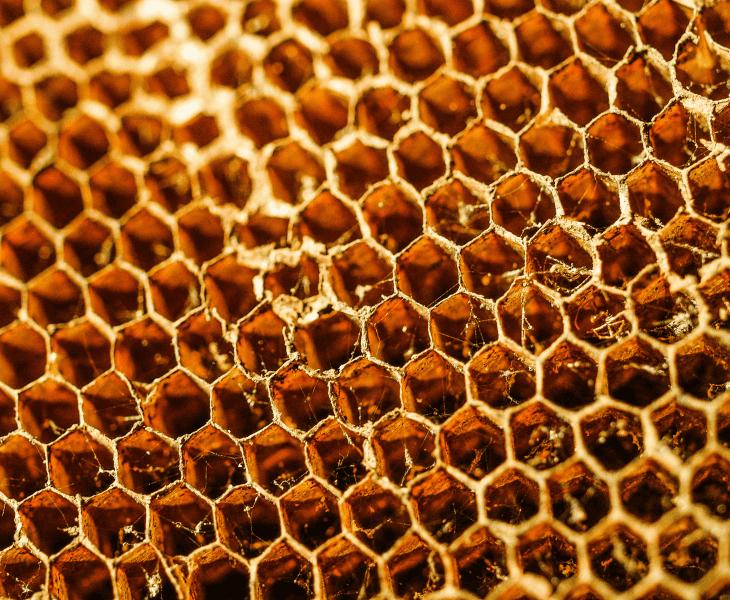
Once the rain stops, bees leave their hives or shelters and continue their tasks.
After the storm, they waste no time in making the most of the peaceful atmosphere.
After rainfall, flowers tend to produce an increased amount of nectar which serves as a nutritious food source for bees.
The bees also take part in cleaning up their hive by removing any unwanted debris that may have entered due to various reasons.
In case of obstruction at the entrance of the hive, the guard bees relocate themselves to allow the passage to be unobstructed once again.
Understanding and Protecting Bees
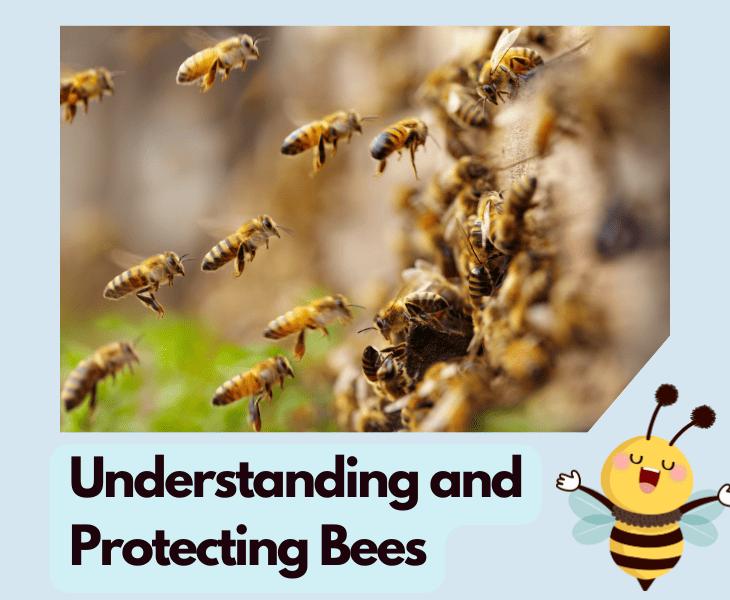
Studying the actions of bees in rainy conditions is a captivating investigation into their innate behaviors and methods for staying alive, as well as an essential aspect of their protection.
Environmental changes and loss of habitat are posing a serious threat to several species of bees.
To ensure the survival of bees, it is important to establish appropriate habitats that offer sufficient shelter from harsh weather conditions such as heavy rainfall.
One way to support bees is by providing them with shelter during sudden rain by planting shrubs and trees in your garden or local park.
Fact: Placing your beehive in a protected area that shields it from rain and wind can greatly increase the chances of your bees’ survival.
Takeaway
Where do bees go when it rains? Bees have developed a variety of strategies for avoiding the effects of precipitation.
When it starts to rain, honeybees might head back to their hives.
However, solitary bees and some bumblebees might take shelter behind some leaves or petals, or even in their underground burrows.
The bee’s remarkable ability to adapt to adverse conditions is a testament to the species’ toughness and ingenuity.
Source: https://t-tees.com
Category: WHEN
